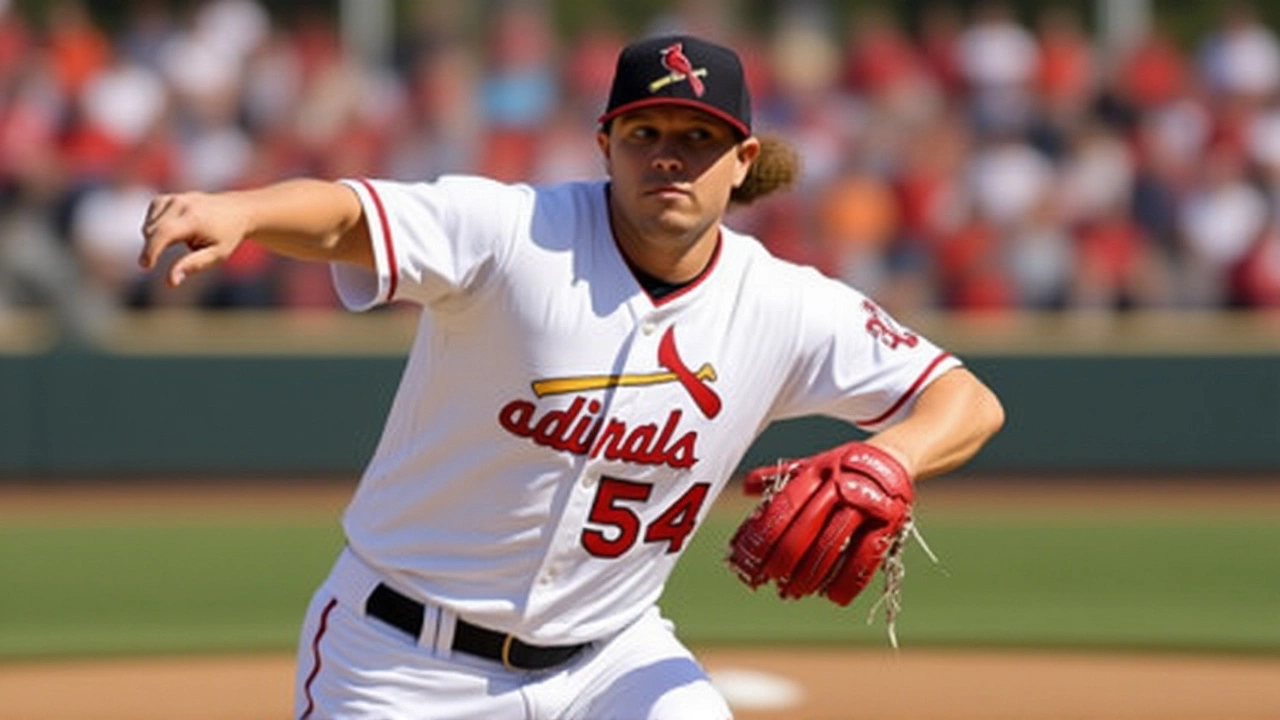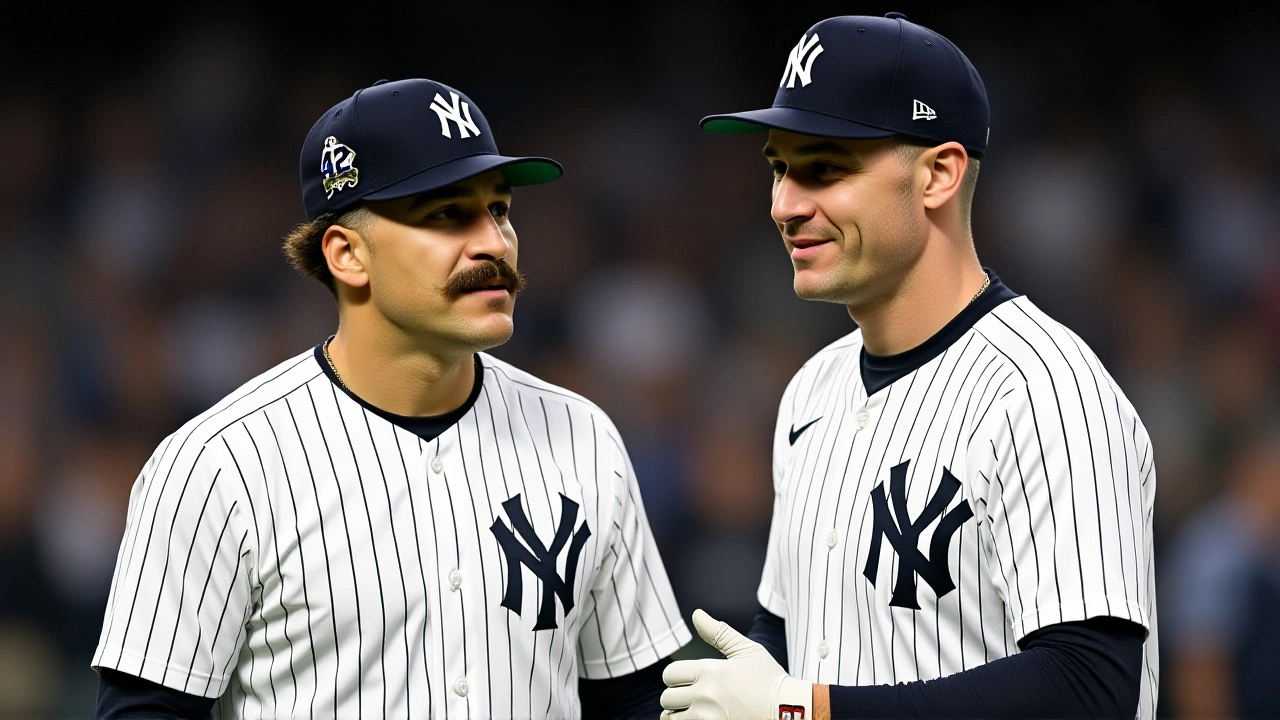The Sonny Gray era in St. Louis ended not with a flourish, but with a financial gut-punch — and a quiet pivot toward the future. On November 25, 2025, just hours before Thanksgiving, the St. Louis Cardinals shipped the 36-year-old veteran right-hander to the Boston Red Sox in exchange for two pitching prospects and a staggering $20 million cash payment. The deal, confirmed by Jeff Passan of ESPN and later detailed by MLB.com and Fox News, wasn’t just a roster move — it was a statement. The Cardinals, who missed the playoffs in 2025, are no longer pretending to contend. They’re rebuilding. And they’re willing to pay to do it right.
Why the Red Sox Took the Risk
For Boston, this wasn’t a splashy free-agent signing. It was a targeted upgrade. After finishing 89-73 and making their first postseason appearance since 2021, the Red Sox needed rotation depth behind ace Garrett Crochet. Craig Breslow, Boston’s Chief Baseball Officer, didn’t sugarcoat it: "We’ve been transparent about our desire to add to the rotation." Gray, despite his age, brings something rare — consistency. In 2025, he posted a 14-8 record with a 4.28 ERA over 32 starts, striking out 208 batters. His walk rate? A career-best 5%, and his strikeout-to-walk ratio of 5.29 ranked fourth in MLB. That’s not the stuff of a fading arm — it’s the profile of a pitcher who’s mastered control.
But here’s the twist: Gray’s four-seam fastball was brutal last season. Batters hit .370 against it with a .585 slugging percentage. MLB.com called it "one of the weakest four-seamers of any starter who didn’t call Coors Field home." That’s a red flag. Yet Boston saw past it. They saw a pitcher who still locates, who doesn’t give in, who thrives on deception and command. And they were willing to pay for one year of it — even if that year cost them two promising arms.
The Price Tag: Two Prospects and $20 Million
The return for Gray? Left-hander Brandon Clarke, the Red Sox’s No. 5 prospect according to MLB.com, and right-hander Richard Fitts. Both are 22, both have six years of team control, and both are viewed as future rotation pieces — not just bullpen arms. Clarke throws a low-90s fastball with a sharp slider; Fitts relies on deception and a devastating changeup. Neither has reached Triple-A yet, but both are ranked in the top 100 prospects in baseball by some outlets.
But the real shock? The $20 million. Gray’s original 2026 contract with the Cardinals was $35 million, with a $30 million mutual option for 2027. After the trade, Boston and Gray renegotiated: his 2026 salary dropped to $31 million, and the buyout on the 2027 option jumped from $5 million to $10 million. That means Boston is now on the hook for $31 million this year, with a $10 million exit ramp if things go south. The Cardinals paid half of that $31 million — $15.5 million — to offset the cost. But wait — they actually sent $20 million. That’s $4.5 million extra. Why? Because the Cardinals didn’t just want to offload Gray. They wanted to signal to their front office — and to the league — that they’re serious about shedding payroll for the future.
Cardinals: A Rebuild in Motion
One year after signing Gray to a three-year deal, the Cardinals are moving on. That’s not just a bad decision — it’s a strategic pivot. New president of baseball operations Chaim Bloom didn’t inherit a contender. He inherited a roster full of aging stars and bloated contracts. The Gray trade is his first major move — and it’s a template. MLB.com’s analysis pointed directly to Nolan Arenado, who still has $42 million left on his deal through 2027. If the Cardinals can move Gray with $20 million in cash, they can move Arenado too. Maybe even more.
The message to fans? This isn’t a fire sale. It’s a rebuild with discipline. They’re not trading away their best players for scraps. They’re trading for young, controllable arms — and taking the financial hit to make it happen. The farm system, long considered one of baseball’s weakest, is now being prioritized. Clarke and Fitts aren’t just prospects. They’re the foundation.

Is This a Win for Boston?
Not everyone agrees. Ken Rosenthal of The Athletic wasn’t convinced. On "Foul Territory," he asked: "Did the Red Sox do well enough?" His point? Two top-10 prospects for a 36-year-old pitcher with a suspect fastball? That’s risky. And it’s expensive. The Red Sox could’ve spent that money on a bat — or on a cheaper, lower-risk starter. But Boston’s front office sees something else: a short-term win that doesn’t require a long-term commitment. Gray isn’t a franchise anchor. He’s a bridge. And if he pitches like he did in 2023 — when he finished second in Cy Young voting — they’ll look like geniuses.
But if he regresses? The cost is high. Clarke and Fitts are no longer available. The Red Sox traded future potential for present stability. And in a league where young pitching is gold, that’s a gamble.
What’s Next?
For the Red Sox, the goal is clear: win now. With Gray anchoring the rotation behind Crochet, they’ll push for a division title in 2026. Their offense, which struggled in the second half of 2025, needs help — and the payroll flexibility from Gray’s trade might allow them to make a move for a middle-of-the-order bat.
For the Cardinals, the path is murkier — but more honest. They’ll likely trade Arenado next. Maybe Paul Goldschmidt after that. They’re not just shedding salary. They’re shedding identity. The Cardinals, once synonymous with steady excellence, are becoming a team of the future. And in baseball, that’s not a failure — it’s a reset.
Frequently Asked Questions
Why did Sonny Gray waive his no-trade clause?
Gray waived his no-trade clause to join the Red Sox, a team with playoff aspirations and a strong fan base — a contrast to the Cardinals’ rebuilding mode. According to Fox News, he was reportedly drawn to Boston’s competitive environment and the chance to pitch in a high-profile market after years in St. Louis, where the team’s performance had declined. His decision also allowed him to renegotiate his contract terms for better long-term security.
How does this trade affect the Cardinals’ future payroll?
By sending $20 million to Boston and renegotiating Gray’s contract, the Cardinals reduced their 2026 payroll obligations by roughly $15 million. This creates significant flexibility to move Nolan Arenado’s $42 million deal in the coming months. The move signals a deliberate shift toward financial sustainability over short-term contention, aligning with new president Chaim Bloom’s rebuild strategy.
What’s the upside for Brandon Clarke and Richard Fitts in St. Louis?
Both pitchers, aged 22, now enter a rebuilding system with a clear path to the majors. Clarke, a lefty with a sharp slider, could rise quickly in a rotation-starved farm system. Fitts, with his deceptive changeup, may develop as a back-end starter or reliever. With fewer pressure-filled expectations than in Boston, they’ll get more development time — and a chance to become core pieces for a Cardinals team aiming to contend by 2028.
Why did the Red Sox pay so much for a 36-year-old pitcher?
Boston didn’t just buy Gray’s stats — they bought his durability and consistency. In a market where top-tier starters like Dylan Cease or Framber Valdez demand $150 million-plus deals, Gray offered a one-year, high-floor option. His 2025 walk rate (5%) and strikeout-to-walk ratio (5.29) suggest he’s still elite at avoiding damage. For a team pushing for a title, that’s worth two prospects — even if the risk is real.
Could this trade impact the 2026 MLB trade deadline?
Absolutely. If Gray thrives in Boston, other teams may follow suit — trading veterans for prospects and cash. Conversely, if he struggles, teams may hesitate to overpay for aging pitchers. This trade sets a new benchmark: how much are you willing to pay — and give up — for one year of elite command? The answer could reshape how teams approach deadline deals for years to come.
What does this mean for Nolan Arenado’s future with the Cardinals?
The Gray trade is widely seen as a dry run for Arenado’s eventual exit. With $42 million left on his deal through 2027, the Cardinals need to find a buyer willing to absorb a chunk of his salary — just like Boston did with Gray. If they can move Gray with $20 million in cash, Arenado’s deal — while larger — is structurally similar. Expect a trade to happen before the 2026 season starts, likely for a mix of prospects and cash.



